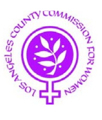Rascals case in brief
In the beginning, in 1989, more than 90 children at the Little Rascals Day Care Center in Edenton, North Carolina, accused a total of 20 adults with 429 instances of sexual abuse over a three-year period. It may have all begun with one parent’s complaint about punishment given her child.
Among the alleged perpetrators: the sheriff and mayor. But prosecutors would charge only Robin Byrum, Darlene Harris, Elizabeth “Betsy” Kelly, Robert “Bob” Kelly, Willard Scott Privott, Shelley Stone and Dawn Wilson – the Edenton 7.
Along with sodomy and beatings, allegations included a baby killed with a handgun, a child being hung upside down from a tree and being set on fire and countless other fantastic incidents involving spaceships, hot air balloons, pirate ships and trained sharks.
By the time prosecutors dropped the last charges in 1997, Little Rascals had become North Carolina’s longest and most costly criminal trial. Prosecutors kept defendants jailed in hopes at least one would turn against their supposed co-conspirators. Remarkably, none did. Another shameful record: Five defendants had to wait longer to face their accusers in court than anyone else in North Carolina history.
Between 1991 and 1997, Ofra Bikel produced three extraordinary episodes on the Little Rascals case for the PBS series “Frontline.” Although “Innocence Lost” did not deter prosecutors, it exposed their tactics and fostered nationwide skepticism and dismay.
With each passing year, the absurdity of the Little Rascals charges has become more obvious. But no admission of error has ever come from prosecutors, police, interviewers or parents. This site is devoted to the issues raised by this case.
On Facebook
Click for earlier Facebook posts archived on this site
Click to go to
Today’s random selection from the Little Rascals Day Care archives….
Click for earlier Facebook posts archived on this site
Click to go to
Today’s random selection from the Little Rascals Day Care archives….
Is clinging to error really ‘how science progresses’?
 Nov. 30, 2012
Nov. 30, 2012
In 1993 (January-February issue), the journal Child Abuse & Neglect published “Sexual Abuse of Children in Day Care Centers” by Susan J. Kelley, Renee Brant and Jill Waterman. This is from the article’s abstract:
“Sexual abuse of children in day care center settings has received considerable attention in the past decade. The nature and extent of allegations of sexual abuse in day care poses unique challenges to clinicians. Cases of sexual abuse in day care typically involve multiple victims and multiple perpetrators, and use of extreme threats to prevent disclosure….”
The article’s misinformation has spread far beyond its original readership. Google Scholar shows “Sexual Abuse of Children in Day Care Centers” to have been cited in other publications no fewer than 36 times, as recently as this year.
I asked Child Abuse & Neglect to publish a retraction.
I received this response from editor-in-chief David A. Wolfe, professor of psychology and psychiatry at the University of Toronto:
“The journal only retracts papers if there are significant errors or other problems, such as plagiarism, health risks etc. Otherwise, it is up to the scientific community to decide when new knowledge or findings would usurp those previously published. This is the case in many areas of research, whereby older (sometimes well-accepted) findings are no longer given credence due to newer findings. It is not feasible or appropriate to remove the previous findings, as that is how science progresses.
“Unless you are aware of specific errors in the 1993 data, rather than drawing different conclusions, the journal would not take any further action.
“I trust this resolves your concerns.”
Well, no, actually it doesn’t. This is what I wrote back to Dr. Wolfe:
“The problem with ‘Sexual Abuse of Children in Day Care Centers’ is not a matter of ‘different conclusions’ being drawn from the data. The entire concept of the article is false: There was never any ‘multiple victim, multiple offender’ sexual abuse in day cares, any more than there was witchcraft in Salem. As has been thoroughly documented by social scientists such as Stephen J. Ceci and Maggie Bruck, and eventually validated in the legal system, all these ritual-abuse cases resulted from a moral panic.
“This passage is from the Retraction Guidelines of the Committee on Publication Ethics: ‘Retraction is a mechanism for correcting the literature and alerting readers to publications that contain such seriously flawed or erroneous data that their findings and conclusions cannot be relied upon. Unreliable data may result from honest error or from research misconduct.’
“And this is from Tom Reller (vice president of global public relations at publisher Elsevier): ‘Our journals, and academia overall, do better when shining a light on bad actors and bad science.’ ”….
“This is my concern, not yours, but ‘bad science’ fostered numerous convictions in Little Rascals, McMartin and other day care prosecutions of the 1980s and early 1990s. A retraction in a journal such as yours would be a significant step toward obtaining true exoneration for these defendants.”
No response from Dr. Wolfe. Maybe he’s reconsidering?
For child witnesses, life was changed forever
 Jan. 4, 2017
Jan. 4, 2017
“[Richard Beck’s ‘Believe the Children’] is perhaps most poignant on the subject of the damage to the young people who acted as witnesses. ‘Children as young as three and almost never older than nine or ten,’ Beck writes, ‘children who previously understood their time in day care as essentially normal, whether happy or not, had their lives reorganized around the idea that they were deeply and irrevocably traumatized.’ ”
– From “Our Panics, Ourselves” by Rebecca Onion in Boston Review (Sept. 22, 2015)
![]()
Edenton Seven can’t wait forever for exoneration
Sept. 1, 2014
The recent deaths of Little Rascals figures Patricia Kephart Hart (obituary cached here) and C. Harvey Williams remind me that the clock is ticking on the defendants as well. (Patricia Kephart, mother of one of the potential child-witnesses, dated and later married Assistant Attorney General Bill Hart; Williams was Edenton police chief.)
Others who have since died include Kirk Osborn, appellate lawyer for Dawn Wilson, and Bradford Tillery, the judge originally assigned to the case.
Let’s hope that none of the Edenton Seven, still awaiting exoneration from the state, shares the fate of Connie Tindall of the Wilmington 10.
Reality notwithstanding, ritual-abuse report lives on
 Nov. 26, 2012
Nov. 26, 2012
Although no mention of the notorious Report of the Ritual Abuse Task Force is to be found on the Los Angeles County Commission for Women web site, I was curious whether an original booklet might still be available.
Sure enough, a few weeks after I mailed my request to the commission a pristine copy arrived. The text is widely available online, but somehow the experience of holding and reading it is even… creepier.
“Ritual abuse is a serious and growing problem in our community and in our nation…,” it begins. “Society is only just beginning to recognize the gravity and scope…. Parents need to be educated about the hallmarks of this abuse occurring in preschools and day care centers….
“The ritual abuse in such an institutional setting is not incidental to its operation, but is in fact intrinsic, the very reason for the institution’s existence….
“To victimize and indoctrinate as many young children as possible, (ritual abusers) frequently function together in groups in the operation of preschools, day-care services and baby-sitting services, providing themselves access to children outside of their own families.”
Even now, when the case for ritual abuse no longer draws a crowd, the Report of the Ritual Abuse Task Force continues to be cited respectfully, as in “Healing the Unimaginable: Treating Ritual Abuse and Mind Control” (2011), “If the West Falls: Globalization, the End of America and Biblical Prophecy” (2011) and “Healing the Soul after Religious Abuse: The Dark Heaven of Recovery” (2009).
What must it take to slay the ritual-abuse dragon – a stake through the heart?











0 CommentsComment on Facebook